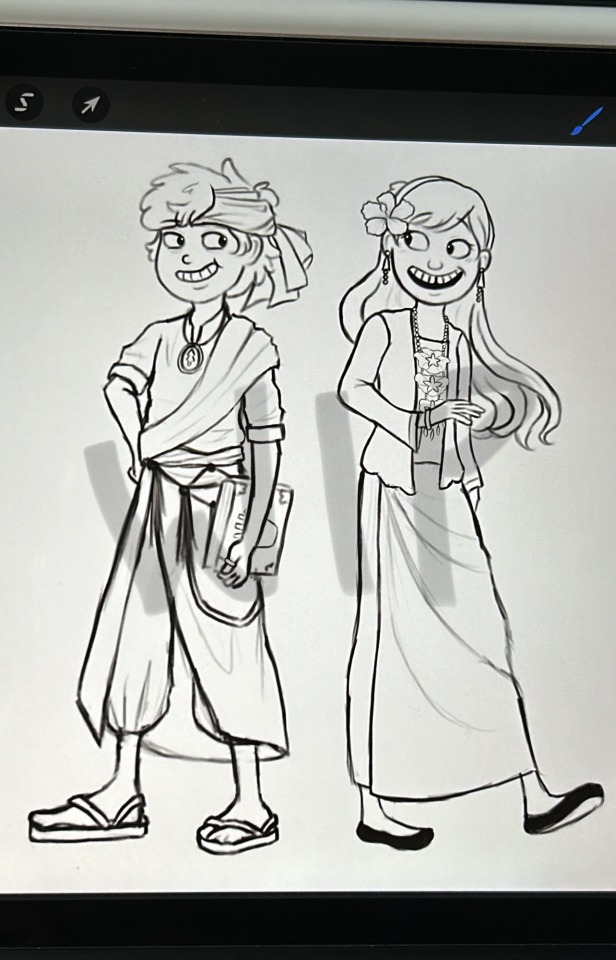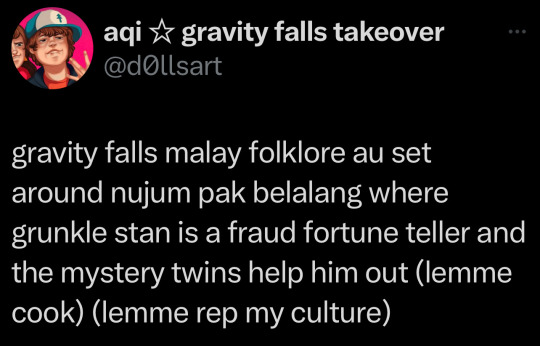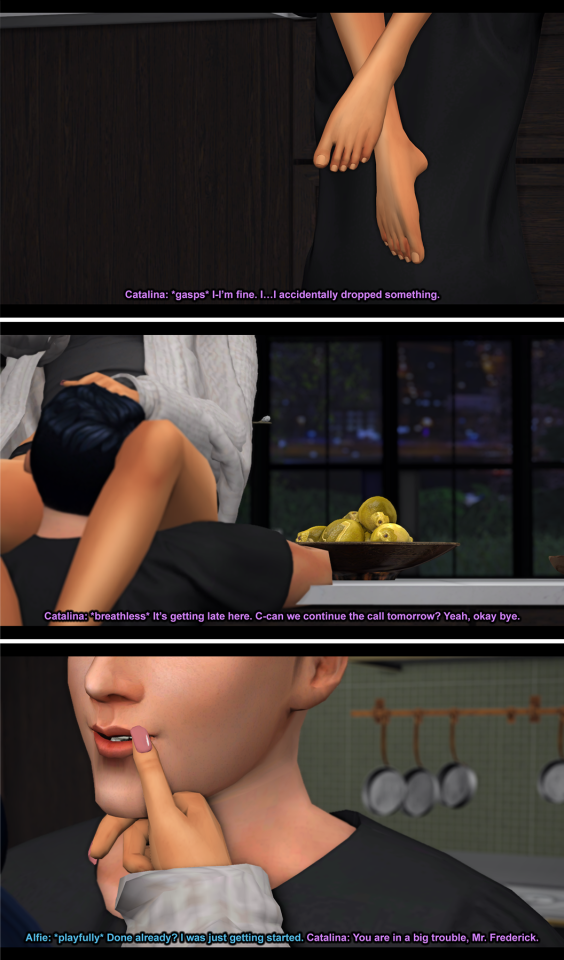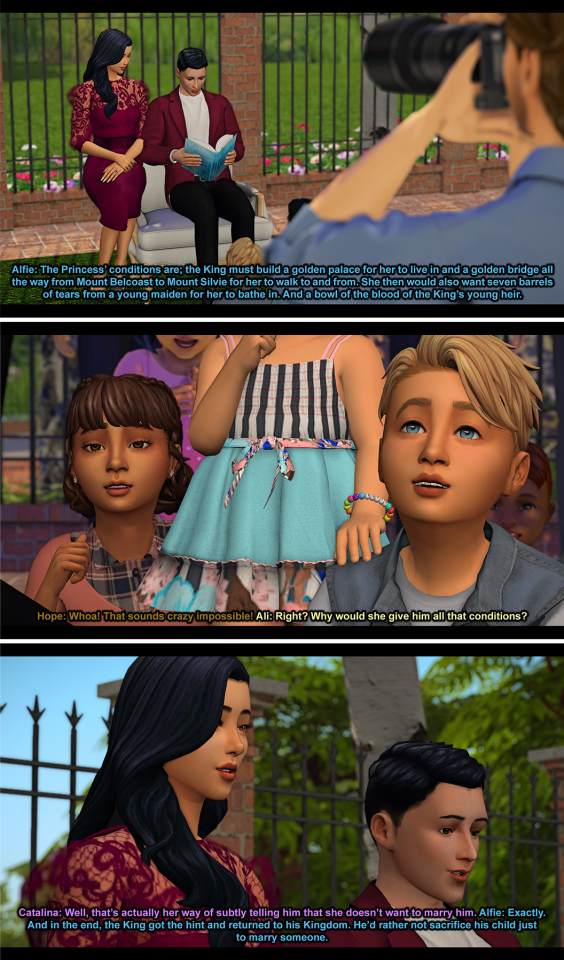#malay folklore
Explore tagged Tumblr posts
Text

mystery twins design WIP for one of my gravity falls AUs based on my culture and its folklore!
since alex hirsch himself posted a video on twitter of a caklempong gravity falls cover i was like YEAHHH NAW I GOTTA MAKE AN AU TO REP MY CULTURE
my context: im mixed indigenous and malay+indonesian and always grew up hearing stories and reading books about folklore from the malay archipelago — so what if i just *snap🫰🏼* malayified the pines twins
based on this tweet i made a few days ago

basically the nujum pak belalang folklore is that pak belalang is a conman (in this case of my AU it's stanley) and his child belalang (in my AU the mystery twins) helps him out with his plans to become a famous fortune teller for the raja (king)
there's so many more folklores i could add maybe even design pages of ford's journals to be pages of actual creatures from my culture such as orang bunian (essentially elves) and so much more
LIKE CHAT LEMME COOK ,,,, ?!?!
32 notes
·
View notes
Text
HANG TUAH IS TAKING OVER MY BRAIN
HELP IAM CURRENTLY HAVING BRAINROT ABOUT HANG TUAH RABHHHHGH HEKPPP THE 3 FICS ON AO3 ARE NOT HELPING

Frick you dude

Why can't I have a brain rot of a more popular historical/ folk figuree like Hamilton or Napoleon, Odysseus or even Tripitaka 😔
#history#folklore#Malay folklore#Malay history#Sultanate of Malacca#malacca#Iam not okay#idk how to tag this#rambles#random#Hang tuah#Hang jebat#Hang kasturi#Hang lekir#Hang lekiu#Iam in my corner#Malaysia history#the brainrot is real
2 notes
·
View notes
Text


Puspa Nirmala and her dragon companion. Malay historical fantasy will always be my favorite.
#artists on tumblr#my ocs#oc art#ocs#digital drawing#digital art#fantasy#historical#dragons#folklore#malay folklore#art#artwork
3 notes
·
View notes
Text
THE VOYAGER AND THE SHARK ; Uncovering the Mysteries of My Own Family Legend
POST 5/5 - In all honesty, retelling and exploring a story of my own is a new experience, but the discussions I've formulated so far have seriously helped me in attempting to communicate it and get the message across.


Long ago, a traveler set off on a journey at sea to a new island, presumably looking for occupational opportunities. This journey was a long one, affected by all manner of obstacles, like dark clouds and storms.
Eventually, the battering storms and harsh waves left him lost and stranded at sea, in the middle of nowhere. Before he passed out, he firmly believed that the predicament he was in would be the cause of his untimely death.
Some time later, the traveler awoke on a sandy shore, on what is now known today as Pulau Pangkor, the rays of the sun casting bright lights overhead, and he was still alone with only his thoughts and feelings to accompany him. How did he not die? Who saved him? What saved him?
He soon concluded that this must have been the doing of some sort of large sea creature, that must have carried his unconscious form on its back to safety on this lonesome island - and he believed that the sea creature in question was a shark.
He had never been more grateful in his life - to a shark, no less. To convey his appreciation, he proclaimed that for the next seven generations, his descendants who happen to consume or harm sharks in any way, shape or form will have to face the consequences, as he now considered the shark that helped him a friend.

In essence, there is a myriad of things to unpack about this legend. The most logical way to start would be discussing the aforementioned proclamation - which, to my surprise, does possess some degree of truth. According to my mother, those who are part of the seven generations mentioned and who have consumed products utilising the meat of sharks have been known to come across cases of vomiting blood, constipation, etc. soon after. The seven generations are believed to have ended with either my grandparents or my parents. What we know for sure and can infer from this, though, is that the traveler is definitely one of our ancestors, who existed some time ago.
The topic of whether the sea creature that helped the traveler was necessarily a normal shark, too, is also up for discussion - my parents and I believe it to have been a whale shark, since other sharks have more streamlined bodies and are generally faster swimmers, meaning that no normal shark could carry a human on its back, even if it tried. Whale sharks, however, are much, much bigger and swim at much slower speeds, and technically speaking, they are still sharks.
There's also a separate legend abound within my family that's still closely related with this one, due to a small part of my family's lineage originating from Pulau Pangkor. It's said that somewhere in the island lies a hidden, ancient treasure, guarded by a djinn.
This is about all I can infer from my mother's brief accounts of the complete story. It captivated me when I first heard of it, not just because of the fantastical nature of the tale, but also because somehow, it feels so intriguing to know that my family has passed down a tale so rich in mystery and enigma, and the prospect of sharing it with others around me has been something I've set my sights on for a long time now.

2 notes
·
View notes
Text

Secret santa gift for a friend, a creature from Malay folklore
15 notes
·
View notes
Text
guys what if i was your best friend since we were kids, and i grew up with you and learned with you and followed the path of the warrior with you until we were both untouchable in a fight unless by each other. it’s always been just me and you. and then we both end up pledging our weapons to a ruler as his strongest warriors with a few other friends, but it’s still always been just you and me in any way it matters. you’re still the only one who can touch me in a fight. the years pass in our service to the ruler until one day you are unjustly accused and sentenced to death. for the first time it is just me without you. and in my grief i turn my weapon on the one we pledged our loyalty to, vowing to take his life in exchange for yours. and as i get close enough to that moment who else appears but you—alive and well. and i would have fallen to my knees in relief and held you if it wasn’t for the fact that it is your weapon pointed at me this time, and your voice calling me a traitor to our ruler. i question if your loyalty is greater than your love for me; i am answered when you strike me down. you hold me as i die and in the end, it’s still just you and me, before all that’s left is you. what then. this is about hang tuah and hang jebat btw
#sev.screams#thinking about folklore for reasons and then realised that damn this feels kinda 🏳️🌈#for reasons i will spin this and make it wlw. but you guys see the vision right#1500s historical fiction malay yaoi. the conservatives would explode
48 notes
·
View notes
Text

"Imagination becomes reality, when you're in the land of Magika"
#back on my malay roots#by that i mean specifically this movie musical about our folklore#magika#smg4#smg4 fanart#Spotify
37 notes
·
View notes
Text

👻 Unveiling the Mysteries of the Toyol 👻
Step into the eerie world of Southeast Asian folklore with our latest blog post about the Toyol. This mythical creature, believed to be the spirit of a child, is often summoned by sorcerers for its mischievous deeds. Learn more about its origins, stories, and the cultural significance that surrounds this fascinating legend. Read all about it here: https://nonightlight.wordpress.com/2024/10/02/the-supernatural-toyol-southeast-asias-mischievous-spirit/
#toyol#southeast asian folklore#mythical creatures#folklore#legends#mysteries#spooky tales#culture#blog post#discover#malay mythology#asian mythology#spirit#supernatural#ghost#cultural belief#traditional stories#haunted#spirit world#malaysia#myth and legend
0 notes
Text
Sang Nila Utama: Singapore's Royal Connection to Alexander
Singapore's founder Sang Nila Utama is described in the Malay Annals as a descendant of Alexander the Great.
via the Greek Reporter, 04 February 2024: Singapore’s foundation story, as recounted in the Malay Annals, links the Sumatran prince Sang Nila Utama as a descendant of Alexander the Great (Iskandar Shah). This is likely a political myth to create an illustrious lineage for the rulers of Melaka. Amongst several generations of descendants of Alexander, King Suran (reign 1014 – 1044) emerged as the…

View On WordPress
#Malacca (city)#Malay Annals / Sulalatus Salatin (literary work)#mythology and folklore#Sang Nila Utama (person)#Temasek (toponym)
0 notes
Text

gravity falls — malay archipelago!AU
This AU is based off the maritime trading period of malay and indonesian culture + folklore.
in this AU, stanley pines is a fraud fortune teller/conman and mabel & dipper sailed down straits of malacca for the monsoon season at their grunkle's 'kampong misteri'.


ummmm yeahhhh silly doodles teehee :3
520 notes
·
View notes
Note
Hey ozz!!
Finally got around to doing the ask!
Hope you feel well currently!
This is my ask for the October event! Tho you can do whatever you want with this as I don't mind!
It's the ghost I was talking about the last couple weeks lol it's one of the most common one in my culture, there's another one in the works but I'll send it tmr, (hint: witch darling and bodyguard monster)
Langsir are ghosts/vampires that come from Malay folklore and are usually women that died in childbirth or while in the 40 days of uncleanliness of the pregnancy (tbh I'm not even sure) or a mother that had a heart attack and died at the news of the baby being a stillborn. They won't transform into the vampire until they're given proper burial rights to make sure they don't comeback for the dead
They feed on human blood and prefers blood from guys and male babies specifically
They look like pretty woman with ankle length hair, extremely long nails and wear a green robe. They have a scent of plumeria flowers and sometimes have the ability to transform into an owl in some legends
They have a hole in the back of their neck and if you stuck an iron nail into it, the vampire will turn into a normal beautiful human who will be a great wife! Because of this weakness, you can ward them off with sharp items (main reason why people tell you to hide knives into the baby's crib and stuff)
Anyways enough info and onto the prompt:
Darling is already married to the yandere and suddenly she died in childbirth. but alas, her dear yandere decided to get her back by not giving her the proper burial! Even then the yandere has already prepared with the nails to keep ghost darling trapped forever to his side!
Til ̶N̶o̶t̶ ̶e̶v̶e̶n̶ death do us part lol!
That's all!!! It's nice to join the event and maybe later I'll do my own posts for it once I have the time!
(can I take 🌺 anon or 🪺 anon?)
Thank you for the lovely story, I had waited to pair it with my other ghost entry for a themed day haha. content: female reader, ghost reader, death, captivity
Yandere!Husband did not take the news of your death well. It was to be expected, of course, and everyone smiled pitifully at the grieving spouse. They didn't question it when he requested a private burial. They didn't doubt that it was for the best when he packed up and left without a warning.
At first, you thought this was some sort of purgatory. You knew you had died, yet you didn't think you'd find yourself back home. Then you found the sigils, the books, the cursed nails.
He trapped your soul here.
"You gave me the scare of my lifetime," your husband exclaims, entering the room with a joyful smile.
The tears have dried, and the eyes are narrowed in an eerie kind of happiness you don't recognize.
"I should be dead," you mumble hesitantly.
"According to whom?" he questions, tilting his head innocently. "You know, I'm a little hurt you don't remember our vows.
I promised I'd always be your husband, have I not?"
He kneels before you, taking a moment to observe your features.
"Did you think I'd allow anything to defile my meaning of 'always'? You're mine. And nothing will ever change that."
167 notes
·
View notes
Text
HANG TUAH VERSUS HANG JEBAT ; The Blurred Lines between Loyalty and Betrayal
POST 3/5 - A classic tale of a tragic falling-out between two friends, but the complexity of its conclusion far outshines the story in its entirety, for most people.


Hang Tuah, commonly known for his many ambitious endeavors with his four friends; Hang Jebat, Hang Kasturi, Hang Lekir and Hang Lekiu, was a prominent Laksamana (admiral) and warrior who served Sultan Mahmud Syah in Malacca in the 15th century. He has played many supporting roles in other Malay folk tales that remain well-known to this day, like the story of the Taming Sari keris and his involvement in seeking Puteri Gunung Ledang's hand in marriage on the Sultan's behalf, but by far, his most famous tale is that of his conflict with Hang Jebat.
Some time after he began to serve Sultan Mahmud Syah, Hang Tuah was faced with slander that charged him of involvement in adultery alongside one of the Sultan's court ladies, the reason for such allegations being that he was, in a sense, the Sultan's favourite, making other commanders jealous of him.
Sultan Mahmud Syah soon discovered these allegations, but never actually investigated them with a fair trial, and so, he sought out the Bendahara (Prime Minister/treasurer) to execute Hang Tuah. Despite this, the Bendahara decided to take Hang Tuah into hiding in a remote location.
Back in the vicinity of Malacca, everyone wholeheartedly believed that Hang Tuah had since been killed - and his best friend, Hang Jebat, even more so. Having been heavily affected by the injustice of his friend's 'untimely fate,' he was sent into a rage, rebelling against the Sultan by seizing the palace, killing many of the Sultan's men, declaring his own rule, and overall challenging the Sultan's authority.
The Sultan lamented the loss of Hang Tuah when faced with the havoc being wreaked across the palace by Hang Jebat, as Hang Tuah stood as the only warrior capable of stopping him due to being aware of his capabilities. Luckily, the Bendahara stepped in just in time to salvage things, revealing that Hang Tuah was still alive. Hang Tuah was presented with a royal pardon from the Sultan, and was soon ordered to kill Hang Jebat for the chaos he'd caused thus far.
While initially overjoyed to see Hang Tuah alive and well, Hang Jebat was met with surprise when he saw his friend brandishing his keris, preparing for battle. Their long-lasting friendship was quickly overshadowed by the unending loyalty Hang Tuah possessed for the Sultan, and after seven long days, Hang Jebat was finally defeated and killed by the former. While both denounced this act of betrayal to their friendship, the two friends shared a mutual understanding that to Hang Tuah, loyalty to the Sultan comes before anything.

As previously mentioned, the ending of this story brings with it a plentiful discussion - one of who really was the hero, and of who really was in the wrong. Some suggest that it was Hang Tuah for his unwavering obedience in the face of authority, while others express that it was Hang Jebat for his loyalty to his comrade.
While the two both regretted the strain in their friendship, some sources suggest that Hang Jebat reacted a lot more strongly to this, possibly feeling a far more immense betrayal (for example, "I was so angry about your execution that I tore down this whole place to avenge your death, and now that I found out you're alive, you want to kill me just because the Sultan told you to!?").
On a serious note, though, if you were to ask me for my opinion on who really saved the show, I'd say it's both of them - both Hang Tuah and Hang Jebat are driven by their own sense of honor; Tuah by his loyalty to the Sultan and Jebat by his quest for justice.
In layman's terms, this story is one of duality and contradiction. In some versions, Hang Tuah is portrayed with more moral ambiguity, raising questions about blind loyalty, which shifts the central theme slightly from one of the glorification of loyalty to a higher power to a more nuanced discussion. Similarly, other versions might depict Hang Jebat's rebellion in a more heroic light, emphasizing his fight against tyranny and injustice and suggesting that standing against unjust authority is honorable, even if it leads to personal ruin.

Even with all of the discrepancies abound when approaching the tale of Hang Tuah and Hang Jebat, the question of who the hero really is is left to the Malay population to work out. The lines between right and wrong are rather subjective for most of us to understand, not only in the context of this story, but in many aspects of real life, too.
The narrative embodies the tension between loyalty to authority and personal moral convictions, mirroring the complexities of Malaysian society, which values both traditional hierarchies and individual integrity. It's often hard for us to decide whether loyalty or obedience is more important, especially in situations that require us to consider our own moral judgments about the figures we hold in reverence.
The discussion this time around has been rather open-ended as opposed to the previous folk tales I've explored, but although I don't necessarily like having a clear-cut summary to all of this, it does make for a nice change of pace - in fact, in a sense, it can be used as a call to action to encourage audiences to consider the contrast between our two protagonists, guiding the collective ethos of Malaysian society.

Works Cited
MT Webmaster. “So, Was Jebat or Tuah the Hero?” Malaysia Today, July 2015, www.malaysia-today.net/2015/07/01/so-was-jebat-or-tuah-the-hero/. Accessed 30 May 2024.
Zain, Sabri. “The Tuah Legend.” Sabrizain.org, 2024, www.sabrizain.org/malaya/melaka2.htm. Accessed 30 May 2024.
Noor, Sabrina. “Originally Seen as a Traitor, Hang Jebat May Be the Story’s Real Hero 500 Years Later.” CILISOS - Current Issues Tambah Pedas!, 22 Aug. 2022, cilisos.my/plot-twist-in-the-story-of-hang-tuah-the-real-hero-might-actually-be-hang-jebat/. Accessed 30 May 2024.

#culture#folk tales#malay folklore#malaysia#malaysian culture#hang tuah#hikayat hang tuah#hang jebat
3 notes
·
View notes
Text

Well @reneesbooks since you asked… 🙃🙃🙃
SO they’re kinda based off the story of Puteri Walinong Sari. Which basically goes like this
Walinong Sari is this princess who is 1) So incredibly beautiful that she has to wear a veil everywhere and 2) A master at silat (martial arts). So obviously a lot of people were in love with her and wanted to marry her, but it was declared that she would marry the one who could defeat her in a fight. Many tried, but silat master and all she always won.
One day, a magic prince noticed her. After a few incidents that involved spying on her as a bird and giving her gifts while disguised as a beggar, he falls in love with her. Also entranced by this random beggar who keeps giving her expensive shit, the princess challenges him to a fight. They were perfectly matched and fought for several days straight until the princess’s veil fell off and princey boy was so struck by her beauty that he just. Immediately passes out.
So bystanders pour water on him to try and wake him up and end up washing off his disguise revealing that he’s not exactly human. It also brings this to his DAD’s attention, who’s not happy about him thirsting after a mortal girl and yoinks him out.
Later, the princess has a weird dream where someone tells her what he really was and that if she wants to find him again, she needs to go to peak of this mountain. And so she dips out of the palace and that’s where the original story ends.
The continuation of that for irontongue is that she faces trials and eventually kills the king. She then marries her lover and settles down, has Mira and generally scares the fae enough that no one’s messing with her.
Mira, hearing this story: So you became powerful by killing the ruling monarch and marrying their kid?
Her mom: No dear, it was my love for your father that drove me–
Mira, already leaving: Seduce the heir and commit regicide, got it
irontongue – character intros



picrew
Mira is the daughter of the Summer King and his human bride – a warrior who fought her way into the Faerie and the king’s heart. Yet despite her mother’s undeniable strength, she’s always looked down on humans. The only advantage she sees in her mortal blood is that unlike other fae, she is able to lie. Though it was less of an advantage when that ability of hers angered the wrong person and she found herself cursed to never speak another word again. She’s not too caught up on that though, as communicating in sign language works just as well for her plans. Plans that involve escaping life as last in line and gaining the power she knows she deserves.
Auryn is the youngest son of the Winter Queen. With plenty of other children to be her heirs, she had qualms in trading Auryn away for a human baby who caught her eye. Raised by the human couple who never suspected what he was and always taught him to see the good in the world, Auryn became a skilled hunter and a kind-hearted, human, person. Until mysteriously, each of the winter heirs died and the queen dragged her changeling son back home. Adjusting to magic – and antlers – that he’d apparently had his whole life was one thing, but navigating treacherous fae society is another. He’s not blind to their cruelty, but he can hope that not everyone here is heartless, can’t he?
Piper is Auryn’s quote unquote “brother” – the mortal child he was switched with when they were infants. Growing up as a human in Faerie, Piper developed an understandable distrust towards everything and everyone. He’s learnt to survive, keeping charms in his pockets and avoiding deals that merely sound sweet. His other skills include swordplay, the flute and smuggling enchanted mortals out of the Winter Court. Though oddly, that’s never included himself. He’s left to the mortal world with victims of the fae many times, but he always comes back.
taglist (ask to be +/-): @angie-j-kay @reneesbooks @taskignored @serenanymph
#wip. irontongue#oc. mira#you know beautiful warrior princess with annoying suitors who fucks off to a mountain is like#a recurring thing in malay folklore#as far as i know
15 notes
·
View notes
Text





















Previous | Beginning | Next
(Transcript under the cut - Click Pics for HQ Version!)
@thebrixtons

Author’s Note: The story Alfie is reading to the children is loosely inspired by the Malay Folklore; Legend of Puteri Gunung Ledang

Ginny (on the phone): Can we add fairy lights around the dance platform? Maybe some canopy curtains too?
Catalina: What colour do you want it to be in?
Ginny: Maybe white? Or do you have any other suggestions?
Indirah: I think white is good. Maybe we can hang the fairy lights on the curtains too.
Ginny: Ooh~ Good idea!
Catalina: Alright, do you have any other decorations you want to add?
Ginny: Well, I do have something in mind…

*knock knock*
Rainier (from outside the room): Ginny? Are you in there?
Ginny: Yeah! Don’t come in!
Rainier: Why? What are you doing in there?
Ginny: I’m working on my dress. You can’t see it yet!
Rainier: *chuckles* Okay~ I made strawberry cheesecake for tea time. Come and eat with me when you’re done~
Ginny: Alright. Give me a minute!
Ginny *thinking*: Hmm the wedding dress is almost done. All that is left are the bridesmaid's dresses.

*phone rings*
Alfie: Don’t pick it up.
Catalina: *breathless* It’s Ginny’s ringtone. I think she wants to talk about the wedding preparation.
Alfie: Urgh, cockblocker.
Catalina: *giggles*
Catalina: Hey, Ginny. What’s up?
Catalina: Mhm, I see…
Catalina: Oh, I think I already— *gasps*
Catalina: Wh-what are you doing?
Alfie: Don’t mind me. Continue the call.
Catalina: Alfie— Sorry, Ginny. Can you repeat that?
Catalina: *voice shaking* Y-yeah. I think red is nice.
Catalina: *gasps* I-I’m fine. I…I accidentally dropped something.
Catalina: *breathless* It’s getting late here. C-can we continue the call tomorrow? Yeah, okay bye.
Alfie: *playfully* Done already? I was just getting started.
Catalina: You are in a big trouble, Mr. Frederick.
Alfie: Ooh~ I’m so scared.
Catalina: You’re not sleeping tonight until I’m done with you.
Alfie: Is that a threat, Mrs. Frederick?
Catalina: *scoffs* It’s a promise.

Indirah: Wow, you ordered more than usual. Are you getting the cinnamon roll for Alfie?
Catalina: Huh? This? Nope. They’re mine!
Indirah: Whoa, you must be very hungry. I thought you hate those?
Catalina: I just want to give it a try. They’re not too bad!
Indirah: *chuckles* I’m glad you’re enjoying them then.

[Scene transitions to Lina and Alfie going on an engagement, maybe cutting ribbons for the opening of the children’s library? Alfie reads a book for the children.]
Alfie:…the King fell in love with the Princess after seeing her beauty and asks for her hand in marriage. But the Princess has set several conditions for him before she can agree to his proposal.
Ali: What are the conditions?
Hanna: Yeah! Tell us, Mr. Prince!
Alfie: The Princess’ conditions are; the King must build a golden palace for her to live in and a golden bridge all the way from Mount Belcoast to Mount Silvie for her to walk to and from. She then would also want seven barrels of tears from a young maiden for her to bathe in. And a bowl of the blood of the King’s young heir.
Hope: Whoa! That sounds crazy impossible!
Ali: Right? Why would she give him all that conditions?
Catalina: Well, that’s actually her way of subtly telling him that she doesn’t want to marry him.
Alfie: Exactly. And in the end, the King got the hint and returned to his Kingdom. He’d rather not sacrifice his child just to marry someone.
Hanna: Wah~ The King is a good dad! Just like my appa!
Hope: Tell us more stories, please!

Catalina: You’re going to be a great dad one day, Alfie.
Alfie: Why’d you say that?
Catalina: You’re good with kids. And I know you’re going to be great to our kids.
Catalina: It’s just like a dream I had. You and the children, asleep on the bed after you read them bedtime stories.
Catalina: Just remembering that dream again makes me so happy.

Ginny: *content sigh* This feels like a dream. Everything feels so perfect.
Rainier: Well, if it is. I don’t want to wake up.
Ginny: I can’t wait for our wedding. It’s going to be perfect.
Rainier: I know. I can’t wait too. We’ve waited so long for this.
Ginny: You make me so happy. I don’t deserve you.
Rainier: You do. You deserve everything good in this world.
Rainier: And I’ll continue to make you happy. Until we’re old and grey.
#sims spice#ts4#sims story#sims storytelling#ts4 story#sims 4 story#ts4 storytelling#sims 4 storytelling#ts4 royal#ts4 simblr#ts4 legacy#ts4 edit#ts4 roleplay#ts4 screenshots#WRTStory#WRT: Part 3#Story Arc: After Ever After#WRTCollab: Alfina#WRTCollab: Rainny#Sim: Alfie#Sim: Catalina#Sim: Ginny#Sim: Rainier#Sim: Indirah#tumblr pls don't beat me up for showing mild spice here
66 notes
·
View notes
Text
Quite possibly, one of the most charming—yet frustrating—aspects of history is its unsolved mysteries. The same can be said of linguistics, and only occasionally do they cross over to solve a problem, as in the case of the Rosetta Stone and Egyptian hieroglyphics. Enter the curious so-called Singapore Stone.
Believed to date back to the 13th century or as early as the 10th, the stone was once part of a large slab of inscribed sandstone standing at the mouth of the Singapore River. Then, in 1843, the British blew it up to widen a passageway and build military quarters.
Lieutenant-Colonel James Low, who had previously objected to the explosion, salvaged three fragments of the boulder and sent them to Kolkata for analysis. In 1918, one of the fragments was returned to the Raffles Museum, now known as the National Museum of Singapore. The status of the other two is uncertain, whether lost or still in India.
The stone's inscription has yet to be deciphered. Over the years it has been speculated to be Hindu, Tamil, and Pali, while more recent theories suggest that it is written in Kawi script and contains some Sanskrit words, hinting at the island's past as part of the Majapahit Empire.
Today, the Singapore Stone is designated as one of the eleven national treasures of Singapore. Folklore often associates it with Badang, the legendary Malay strongman whose incredible feats include hurling a massive stone from the nearby Fort Canning to the mouth of the Singapore River.
31 notes
·
View notes
Text
This is a research study on the prevalence of folk beliefs (superstitions) and filial piety in the literature from the Philippine pre-colonial period. It would seem that nothing is truly original. In tracing the first human populations to the last migrations, trade, and conquests, the research shows that, at the onset, there was no culture present in the group of islands later known as the Philippines. Everything seems to have been imported, first by the Negritos some 57,000 yeas ago and by Austronesians some 44,000 years ago during the prehistoric eras; then by traders from various outposts of a series of Hindu empires, China, Japan, and Arabia, Portugal, and Borneo during the precolonial eras.
I'm browsing through this research paper on ancient literary traditions of the Philippines, and I'm a bit bemused that this was the writer's conclusion? "Nothing is truly original" appearing in the same paragraph that says the first inhabitants came 57,000 years ago. asdl;fja;lsdfjk your ancestors could literally have inhabited a place and cultivated their own culture for 57,000 years and people still really be out here saying you got NOTHING ORIGINAL.
Ironically, this paper references Jocano's Filipino Prehistory, which actually questions the migration theory. Here are some insightful excerpts from this book. (Granted it was published in 1998 and more evidence could have come out since then.)
In Many history textbooks, statements like "The first people in the Philippines were the Negritos"... Archaeologically, we do not have any data whatsoever to demonstrate that the Negritos came ahead of all other ethnic groups now living in the archipelago... Unless proven, the Negritos have just as much claim to contemporaneity in the archipelago as all other groups. Another historical view that needs to be carefully reexamined is the ethnic classification of Filipinos as Malays and/or of Filipino culture as Malayan in origin.... [T]hat the region of Southeast Asia was a clean slate until peopled by the Malay immigrants is popular but too simplistic in the face of fossil evidence encountered in the area... The fact that there are fossil human finds of early people prior to [the 40,000 to 21,000 BC] threshold in human evolution in the region still needs empirical explanation. Fossil evidence suggests that the peoples in the region -- Indonesians, Malays, Filipinos -- are the results of both the long process of evolution and the later demographic events. They stand coequal as ethnic groups, without anyone being the dominant group, racially or culturally.
And finally, in the wise words of Thara Celehar, Witness for the Dead, it is "impossible to prove a negative." It's impossible to say nothing is original, because you would have to inspect everything and determine that not a single one is original. But nobody has access to everything. Nobody knows every single folklore and literature that has ever existed in the thousands of years of habitation in the Philippine islands, and can prove that every single one of them in fact came from somewhere else.
20 notes
·
View notes